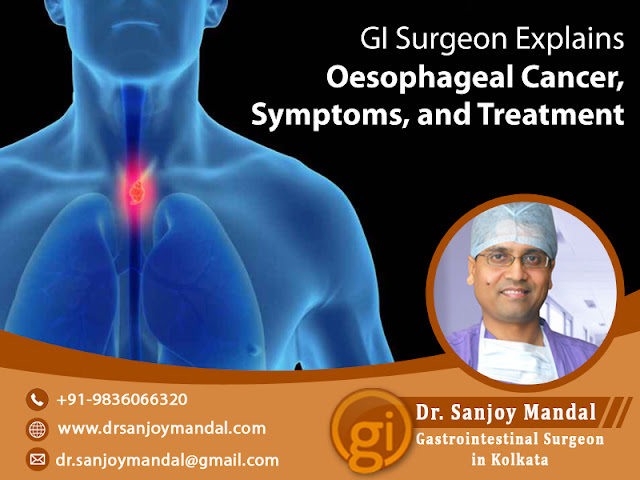Food is swallowed directly into the oesophagus, which is a long tube that connects the throat (pharynx) to the stomach. The oesophagus transports food and liquid in a span of seconds using muscle strength. After a change in the DNA, it causes abnormal cells to expand. Cancer may develop on the inner wall of the oesophagus, says a renowned gastroenterologist in Kolkata. Each year, approximately 18,000 new cases of oesophageal cancer are diagnosed across the country, the majority of which are men. Oesophageal cancer, like other gastrointestinal cancers, can be difficult to identify until it has metastasized.
What are Its Types and Who is at Risk?
Adenocarcinoma
(which starts in glandular cells) and squamous cell carcinoma (which begins in
squamous cells) are the two most commonly occurring oesophageal cancers.
Cigarette smoking is a significant risk factor for both types. Oesophageal
adenocarcinoma and long-term gastroesophageal reflux disease (GERD), also known
as acid reflux or heartburn, have a close correlation.
Barrett's
oesophagus is a disease that occurs when GERD permanently changes the lining of
the oesophagus. People with this disease, as well as those who are obese, have
a higher risk of developing adenocarcinoma. According to the GI surgeon
in Kolkata, excessive alcohol consumption, a poor diet, poor oral hygiene,
and ingestion of tobacco products have all been linked to oesophageal squamous
cell carcinoma.
What are Its Symptoms?
Difficulty
swallowing is one of the first signs of oesophageal cancer. Swallowing
becomes difficult, initially to solids and then progressively to liquids
as the tumour expands and blocks the oesophagus, resulting in the regurgitation
of food and liquids. Patients with advanced disease can experience weight loss
and weakness as a result of their inability to eat.




0 Comments